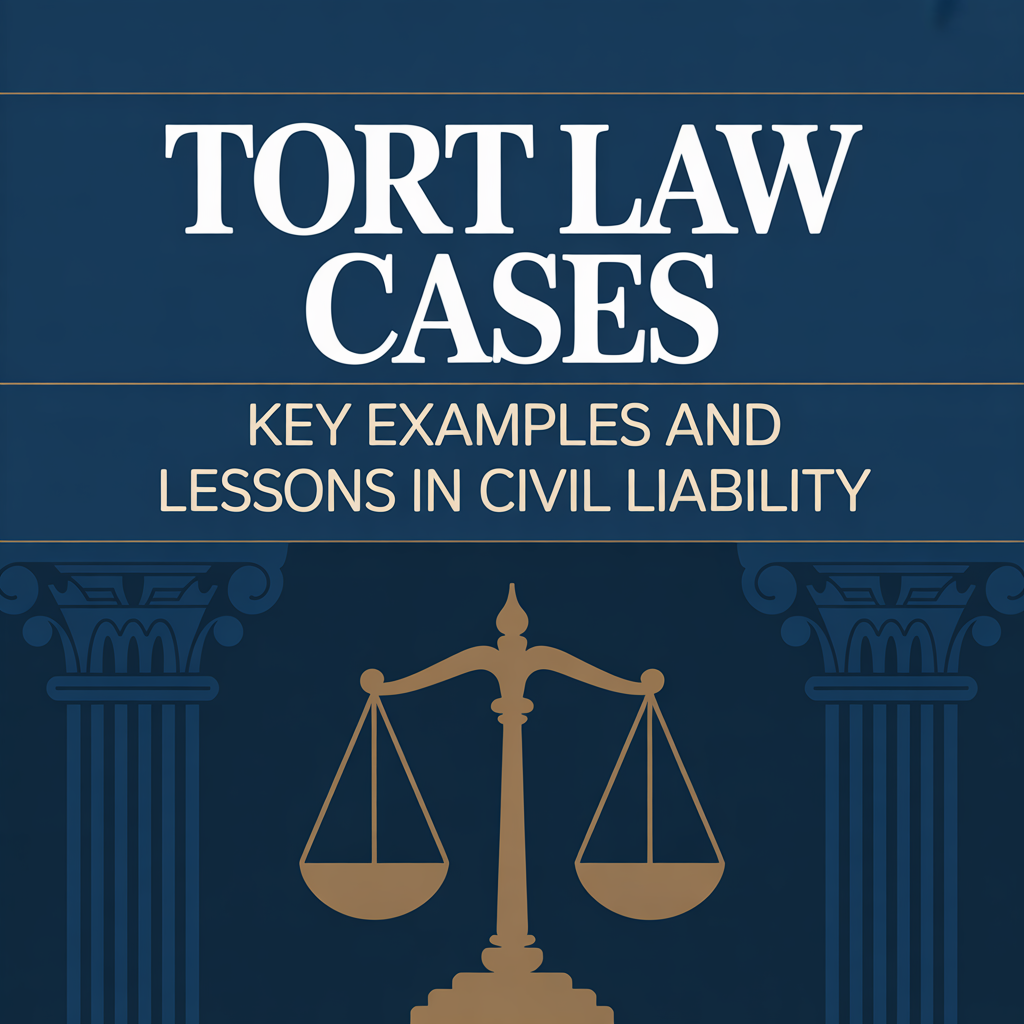Tort law might not be the first thing that comes to mind when you think about justice and accountability, but it plays a crucial role in our legal system. At its core, tort law addresses civil wrongs—situations where one person’s actions cause harm or loss to another. This area of law has evolved over centuries, shaping how we understand liability and responsibility in society.
As we delve into some key examples of tort law cases, you’ll see how these legal battles have set important precedents and offered valuable lessons. Whether dealing with negligence or intentional acts, each case reflects real-world implications for individuals and businesses alike. Join us as we explore the fascinating world of tort law cases and discover what they teach us about our rights and responsibilities in an interconnected world.
Types of Torts and Their Definitions
Torts are civil wrongs that cause harm or loss. They can lead to legal liability for the person responsible. Understanding the different types helps clarify how these cases unfold.
One primary category is negligence. This occurs when a person’s failure to act with reasonable care causes injury to another party. Think of car accidents where distracted driving leads to collisions.
Another significant type is intentional torts, where someone deliberately causes harm. Assault and defamation fall into this group, highlighting personal accountability for one’s actions.
Then there’s strict liability, which doesn’t require proving fault or intent. In product liability cases, manufacturers may be held accountable even if they acted responsibly but still caused harm through defective products.
Each type of tort plays a crucial role in shaping our legal landscape and offering remedies for those wronged by others’ actions or omissions.
Famous Tort Law Cases and Lessons Learned
One of the most well-known tort law cases is Liebeck v. McDonald’s Restaurants. Stella Liebeck suffered third-degree burns from spilled coffee, leading to a landmark verdict that highlighted corporate responsibility. It taught businesses to prioritize consumer safety over profit.
Another significant case is Palsgraf v. Long Island Railroad Co., where a woman was injured due to an explosion caused by falling scales after a train employee helped another passenger board late. The court ruled on foreseeability, shaping negligence standards in future cases.
In the infamous Johnson & Johnson talcum powder case, plaintiffs claimed links between the product and cancer diagnoses. This brought attention to product liability and informed consumers about potential health risks associated with everyday items.
Each of these cases illustrates how tort law shapes societal norms and influences both individual behavior and corporate practices, reinforcing accountability at all levels.
Negligence: A Common Type of Tort
Negligence is a cornerstone of tort law. It occurs when someone fails to exercise reasonable care, resulting in harm to another person. This lack of attention can lead to serious injuries or damages.
Consider the scenario of a driver who texts while driving. The distraction may cause an accident, impacting everyone involved. Here, negligence plays a crucial role in establishing liability.
To prove negligence, several elements must be present: duty of care, breach of that duty, causation, and damages. Each component builds the case against the negligent party.
The implications are significant for both plaintiffs and defendants in these cases. Victims often seek compensation for medical bills or lost wages due to someone else’s careless behavior. Understanding negligence helps navigate personal injury claims effectively and highlights its importance within tort law.
Intentional Torts: Examples and Impact on Civil Liability
Intentional torts arise when one party deliberately causes harm to another. These actions go beyond mere negligence and involve a clear intent to inflict injury or distress.
Assault is a classic example. It involves making someone fear imminent harm, even without physical contact. For instance, raising a fist can create significant emotional turmoil for the victim.
Battery, on the other hand, refers to actual physical contact—like hitting or pushing someone. This tangible act leads to serious legal consequences for the perpetrator.
Defamation also falls under this category. Spreading false information that damages someone’s reputation can result in severe penalties for those found guilty of intentional defamation.
The impact of these torts extends far beyond monetary compensation; they affect relationships and community trust as well. Each case shapes societal norms regarding acceptable behavior and accountability in interpersonal interactions.
Defenses Against Tort Claims
Defenses against tort claims can significantly impact case outcomes. Understanding these defenses helps both plaintiffs and defendants navigate complex legal waters.
One common defense is the concept of contributory negligence. If a plaintiff’s actions contributed to their own injury, damages may be reduced or denied altogether.
Another important defense is assumption of risk. This applies when an individual voluntarily engages in activities with known dangers, effectively waiving their right to sue for related injuries.
Additionally, some defendants may invoke the defense of privilege. This applies in circumstances where the defendant’s actions are legally justified, such as self-defense or consent from the injured party.
Statutes of limitations play a crucial role. They establish time limits within which a claim must be filed. Missing this deadline can result in automatic dismissal regardless of the case’s merits. These defenses highlight the intricacies involved in tort law cases and underscore why legal representation is essential.
The Role of Tort Law in Society
Tort law serves as a crucial pillar in civil society. It provides individuals with a means to seek justice for wrongs committed against them. Whether through negligence or intentional harm, the legal framework holds parties accountable.
This body of law encourages responsible behavior among individuals and businesses alike. Knowing that actions have consequences fosters caution and care within communities. People are more likely to think twice before acting recklessly when they understand potential liability.
Moreover, tort law helps facilitate social order. By resolving disputes outside of criminal proceedings, it alleviates pressure on the judicial system while empowering victims to address grievances directly.
Compensation is another key aspect of tort law’s societal role. Victims can obtain financial restitution for damages suffered, aiding their recovery process and restoring some sense of balance after an injury or loss. This not only supports individual healing but also promotes overall community welfare by addressing harms done effectively.
Conclusion
Tort law serves as a vital component of our legal system, addressing issues of civil liability and ensuring justice for those harmed by the actions of others. By understanding tort law cases, we recognize the complexities involved in personal injury claims and the responsibilities individuals carry within society.
As we’ve explored various types of torts—negligence and intentional torts—we see how these principles shape behavior and influence decisions across communities. Each famous case offers unique insights into human interactions, highlighting both accountability and consequences.
The defenses against tort claims remind us that not every action results in liability; context matters significantly. Tort law ultimately cultivates an environment where safety is prioritized, encouraging individuals to act responsibly while providing recourse when harm occurs.
Through examining these pivotal legal concepts, we gain a greater appreciation for how they mold societal norms. Understanding tort law cases helps foster awareness about rights and obligations in our daily lives—a crucial step towards fostering a safer community for everyone.

